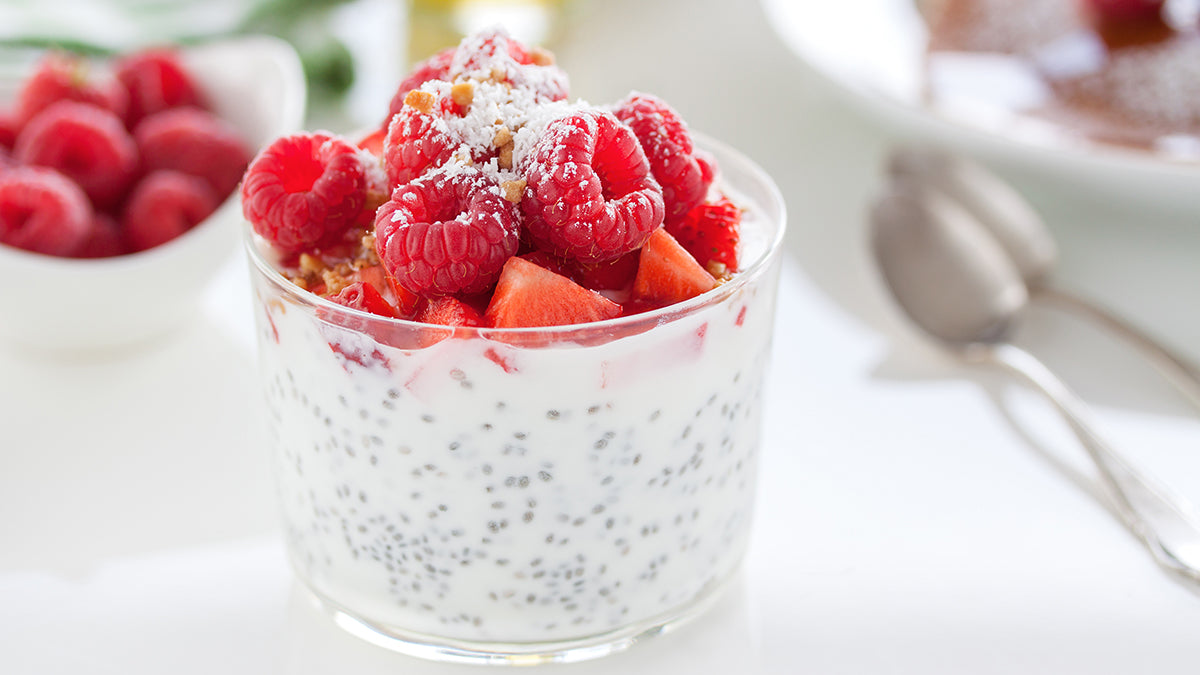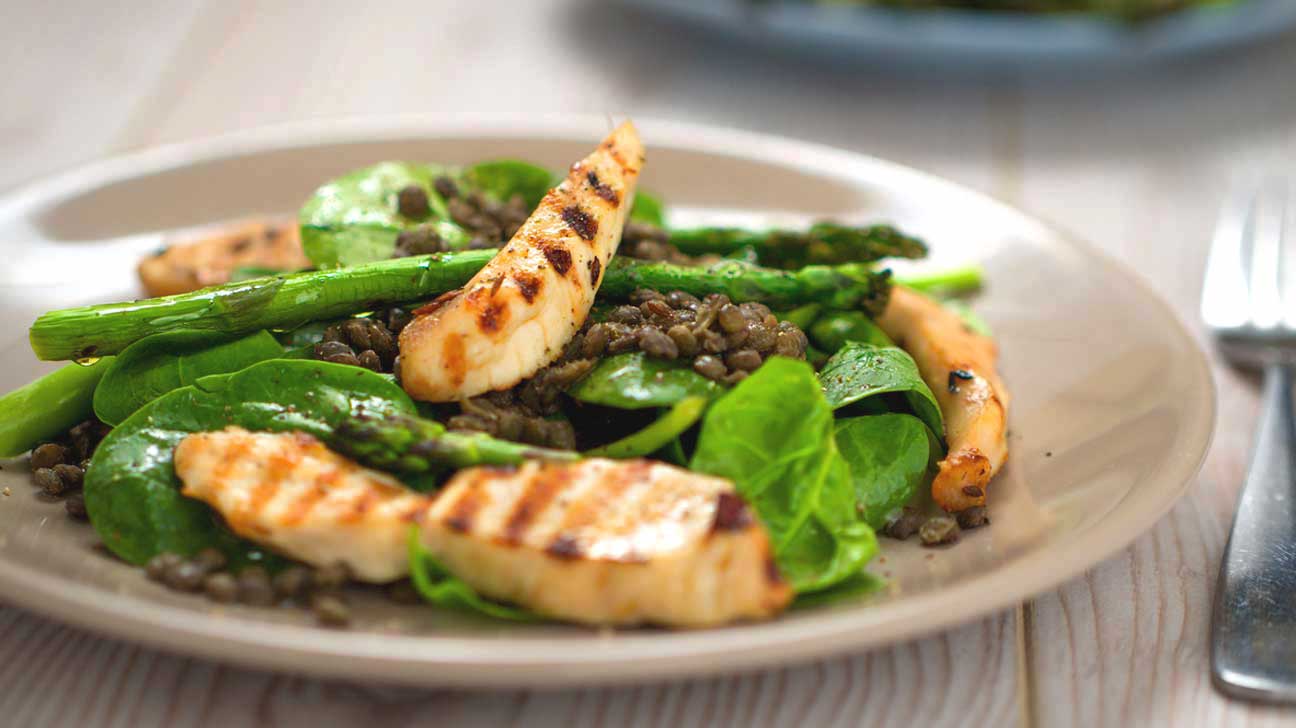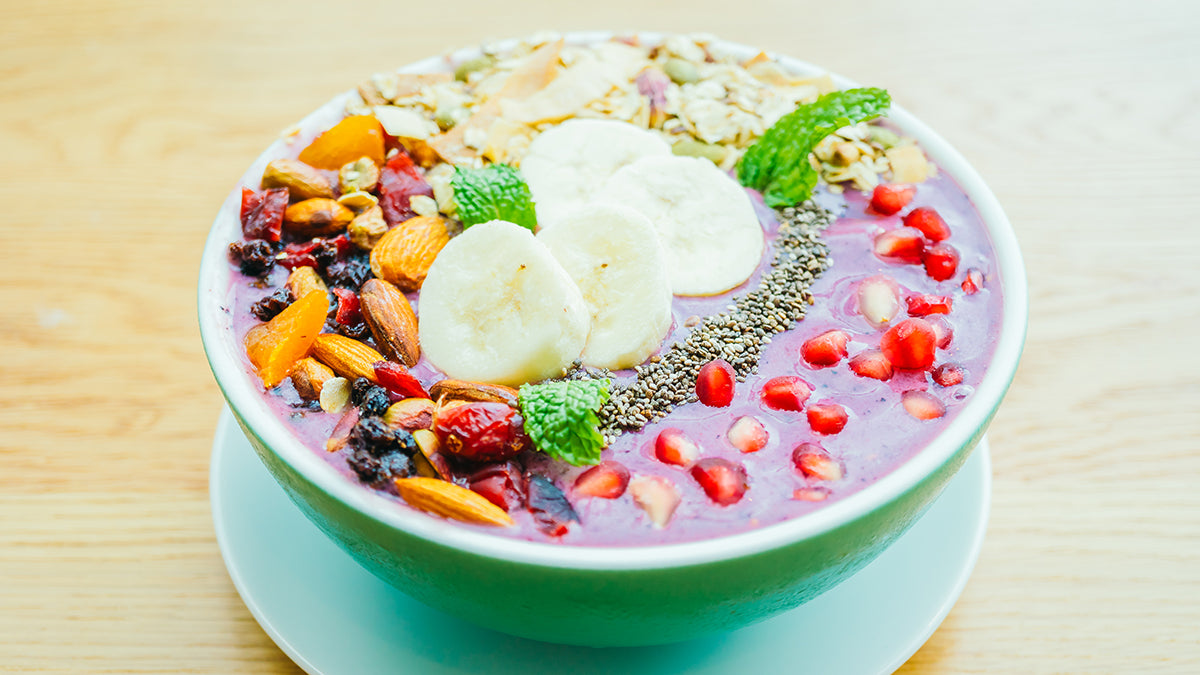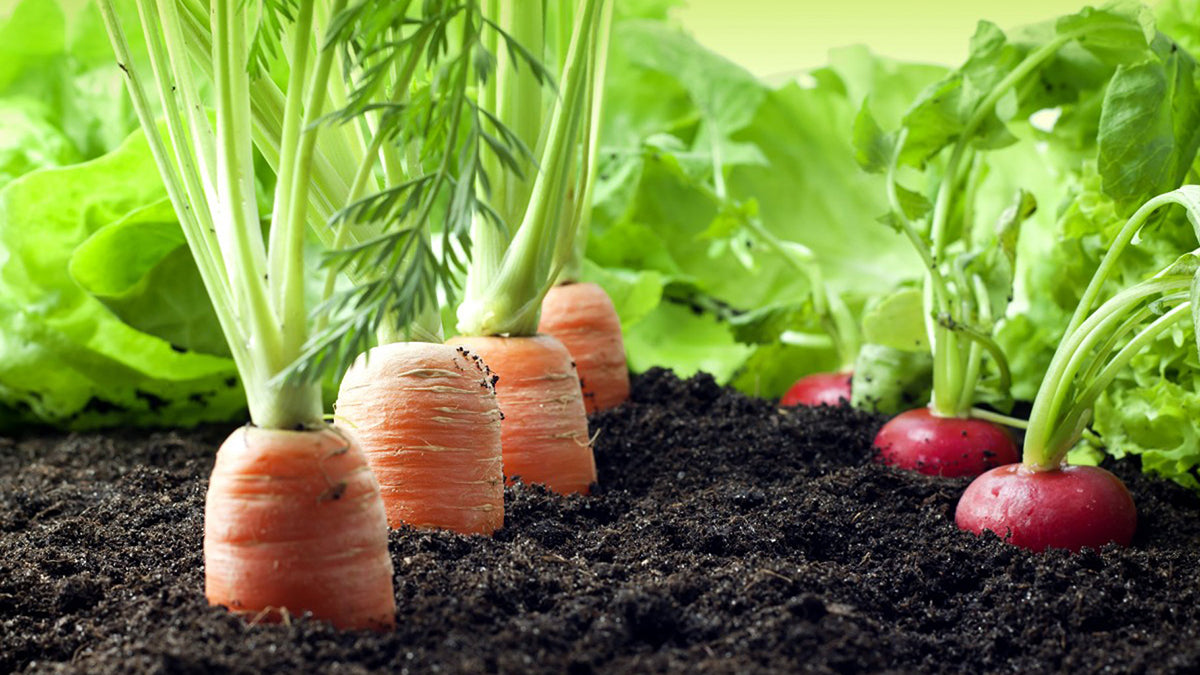The gluten-free diet is extremely popular.
People follow a gluten-free diet for many reasons. Some are attempting to lose weight, while others hope to improve their health.
Those experiencing gluten intolerance need to avoid gluten or else they experience severe discomfort and adverse health effects (1, 2).
This article provides a complete overview of the gluten-free diet, as well as a delicious sample meal plan.
Gluten is a family of proteins found in wheat, barley, rye and spelt.
Its name comes from the Latin word for “glue,” as it gives flour a sticky consistency when mixed with water.
This glue-like property helps gluten create a sticky network that gives bread the ability to rise when baked. It also gives bread a chewy and satisfying texture (3).
Unfortunately, many people feel uncomfortable after eating foods that contain gluten.
The most severe reaction to gluten is called celiac disease.
Celiac disease is an autoimmune disorder in which the body mistakenly harms itself. Celiac disease affects up to 1% of the population and can damage the intestines (4).
If eating gluten makes you feel uncomfortable, it’s best to tell your doctor. These are the most common ways to test for celiac disease (5):
- Blood test: A blood test will look for antibodies that incorrectly interact with the gluten protein. The most common test is a tTG-IgA test.
- Biopsy from your small intestine: People with a positive blood test will likely need to have a biopsy. This is a process in which a small tissue sample is taken from your intestine and checked for damage.
It’s best to get tested for celiac disease before trying a gluten-free diet. Otherwise, it will become hard for your doctor to tell if you have celiac disease or not.
People who don’t have celiac disease but feel they may be sensitive to gluten can try a strict gluten-free diet for a few weeks to see if their symptoms improve. Be sure to seek assistance from a doctor or dietitian who can advise you on what to eat and what to avoid.
After a few weeks, you can re-introduce foods that contain gluten into your diet and test for symptoms. If a gluten-free diet doesn’t help your symptoms, it is likely that something else is causing your digestive problems.
SUMMARYGluten is a family of proteins that is found in cereal grains and helps give bread its structure. Unfortunately, those with celiac disease and non-celiac gluten sensitivity experience discomfort when they eat foods that contain gluten.
Most people can eat gluten without experiencing side effects.
However, people with gluten intolerance or celiac disease cannot tolerate gluten.
People with other disorders like wheat allergy and non-celiac gluten sensitivity also frequently avoid gluten.
Aside from an allergy, there are two main reasons why someone would want to avoid gluten.
Celiac Disease
Celiac disease affects up to 1% of people worldwide (4).
It is an autoimmune disease in which the body mistakes gluten as a foreign threat. To remove this “threat,” the body overreacts and attacks the gluten proteins.
Unfortunately, this attack also damages surrounding areas, such as the gut wall. This can lead to nutrient deficiencies, severe digestive issues and anemia, as well as increase the risk of many harmful diseases (6).
People with celiac disease often experience sharp stomach pain, diarrhea, constipation, skin rashes, stomach discomfort, bloating, weight loss, anemia, tiredness and depression (1).
Interestingly, some people with celiac disease don’t experience digestive symptoms. Instead, they may experience other symptoms like fatigue, depression and anemia.
However, these symptoms are also common in many other medical conditions, making celiac disease difficult to diagnose (7).
Non-Celiac Gluten Sensitivity
Non-celiac gluten sensitivity is believed to affect 0.5–13% of people (2).
People who are classified as having non-celiac gluten sensitivity do not test positive celiac disease or a wheat allergy. However, they still feel uncomfortable after eating gluten (8).
Symptoms of non-celiac gluten sensitivity are similar to those of celiac disease and include stomach pain, bloating, changes in bowel motions, tiredness and eczema or a rash (2).
However, non-celiac gluten sensitivity is highly controversial. Some experts believe this sensitivity exists, while others believe it is all in people’s heads.
For example, one study tested this theory on 35 people with non-celiac gluten sensitivity. Scientists gave participants both a gluten-free flour and a wheat-based flour at separate times without identifying them.
They found that two-thirds of people could not tell the difference between the gluten-free flour and wheat-based flour. In fact, nearly half of the participants had worse symptoms after eating the gluten-free flour (9).
Also, these symptoms may be caused by other irritants like FODMAPS — short-chain carbohydrates that can cause digestive problems (10).
Nevertheless, some evidence shows that gluten-sensitivity exists (11).
At the end of the day, the evidence surrounding non-celiac gluten sensitivity is mixed. However, if you think gluten is making you uncomfortable, it’s best to let your doctor know.
SUMMARYMost people can tolerate gluten. However, people with celiac disease and non-celiac gluten sensitivity can experience discomfort eating gluten.
Completely avoiding gluten can be challenging.
This is because gluten is found in many common ingredients that are added to foods.
Below are the main sources of gluten in the diet:
- Wheat-based foods like wheat bran, wheat flour, spelt, durum, kamut and semolina
- Barley
- Rye
- Triticale
- Malt
- Brewer’s yeast
Below are some foods that may have ingredients containing gluten added to them:
- Bread: All wheat-based bread.
- Pasta: All wheat-based pasta.
- Cereals: Unless labeled gluten-free.
- Baked goods: Cakes, cookies, muffins, pizza, bread crumbs and pastries.
- Snack foods: Candy, muesli bars, crackers, pre-packaged convenience foods, roasted nuts, flavored chips and popcorn, pretzels.
- Sauces: Soy sauce, teriyaki sauce, hoisin sauce, marinades, salad dressings.
- Beverages: Beer, flavored alcoholic beverages.
- Other foods: Couscous, broth (unless labeled gluten-free).
The easiest way to avoid gluten is to eat unprocessed, single-ingredient foods. Otherwise, you should read the food labels of most foods you buy, as they may have traces of gluten.
For example, oats are naturally gluten-free. However, they are often contaminated with gluten, as they might be processed in the same factory as wheat-based foods (12).
SUMMARYCompletely avoiding gluten can be challenging, as it’s found in many common foods. The best way to completely avoid gluten is to eat whole, single-ingredient foods.
There are plenty of gluten-free options that will allow you to enjoy healthy and delicious meals.
Here is a list of gluten-free foods:
- Meats and fish: All meats and fish, except battered or coated meats.
- Eggs: Eggs are naturally gluten-free.
- Dairy: Plain dairy products, such as plain milk, plain yogurt and cheeses. However, flavored dairy products may have added ingredients that contain gluten, so you will need to read the food labels.
- Fruits and vegetables: All fruits and vegetables are naturally gluten-free.
- Gluten-free grains: Quinoa, rice, buckwheat, tapioca, sorghum, corn, millet, amaranth, arrowroot, teff and oats (if labeled gluten-free).
- Gluten-free starches and flours: Potatoes, potato flour, corn, corn flour, chickpea flour, soy flour, almond meal/flour, coconut flour and tapioca flour.
- Nuts and seeds: All nuts and seeds.
- Spreads and oils: All vegetable oils and butter.
- Herbs and spices: All herbs and spices.
- Beverages: Most beverages, except for beer (unless labeled as gluten-free).
If you’re ever unsure if a food item contains gluten, it’s best to read the food labels.
SUMMARYA gluten-free diet has plenty of options. This allows you to create a variety of healthy and delicious recipes.
A gluten-free diet has many benefits, especially for someone with celiac disease.
Here are some benefits of a gluten-free diet.
1. May Relieve Digestive Symptoms
Most people try a gluten-free diet to treat digestive problems.
These include bloating, diarrhea or constipation, gas, fatigue and many other symptoms.
Studies have shown that following a gluten-free diet can help ease digestive symptoms for people with celiac disease and non-celiac gluten sensitivity (13, 14).
In one study, 215 people with celiac disease followed a gluten-free diet for six months. The gluten-free diet helped significantly reduce stomach pain and the frequency of diarrhea, nausea and other symptoms (15).
2. Can Reduce Chronic Inflammation in Those With Celiac Disease
Inflammation is a natural process that helps the body treat and heal infection.
Sometimes inflammation can get out of hand and last weeks, months or even years. This is known as chronic inflammation and may lead to various health problems (16).
A gluten-free diet can help reduce chronic inflammation in those with celiac disease.
Several studies have shown that a gluten-free diet can reduce markers of inflammation like antibody levels. It can also help treat gut damage caused by gluten-related inflammation in those with celiac disease (17, 18).
People with non-celiac gluten-sensitivity may also have low levels of inflammation. However, it’s not completely clear if a gluten-free diet can reduce inflammation in these people (19).
3. May Boost Energy
People with celiac disease often feel tired, sluggish or experience “brain fog” (20, 21).
These symptoms may be caused by nutrient deficiencies because of damage to the gut. For example, an iron deficiency can lead to anemia, which is common in celiac disease (22).
If you have celiac disease, switching to a gluten-free diet may help boost your energy levels and stop you from feeling tired and sluggish (13).
In a study including 1,031 people with celiac disease, 66% of them complained of fatigue. After following a gluten-free diet, only 22% of people still experienced fatigue (23).
4. Can Help You Lose Weight
It’s not unusual to lose weight when you start following a gluten-free diet.
This is because it eliminates many junk foods that add unwanted calories to the diet. These foods are often replaced by fruit, veggies and lean proteins.
However, it’s important to avoid processed “gluten-free” foods like cakes, pastries and snacks, as they can quickly add a lot of calories to your diet (24).
Focus on eating plenty of whole, unprocessed, gluten-free foods like fruits, veggies and lean proteins.
SUMMARYA gluten-free diet can provide many health benefits, especially for those with celiac disease. It may help ease digestive symptoms, reduce chronic inflammation, boost energy and promote weight loss.
Despite having a variety of health benefits, a gluten-free diet can have some downsides.
Here are a few disadvantages of a gluten-free diet.
1. Risk of a Nutritional Deficiency
People who have celiac disease are at risk of several nutritional deficiencies.
These include deficiencies in fiber, iron, calcium, vitamin B12, folate, zinc, vitamins A, D, E and K and more (25).
Interestingly, studies have also found that following a gluten-free diet may not help treat nutritional deficiencies (24, 26).
This is because people on a gluten-free diet seem to choose more processed foods labeled as “gluten-free” over nutritious gluten-free foods like fruits and vegetables (26).
Moreover, many gluten-free versions of foods are not fortified with B vitamins, such as folate.
Since fortified bread is a major source of B vitamins, people on a gluten-free diet may be at risk of deficiency for these vitamins. This is especially concerning for pregnant women with celiac disease, as B vitamins are vital for the growth a healthy baby (27).
2. Constipation
Constipation is a common complaint about a gluten-free diet.
Gluten-free diets eliminate many popular sources of fiber like bread, bran and other wheat-based products. Eating a fiber-rich diet may help promote healthy bowel movements (26, 28).
In addition, many gluten-free substitutes for wheat-based products are low in fiber. This could be another reason why constipation is common on a gluten-free diet (29, 30).
If you experience constipation on a gluten-free diet, aim to eat more fiber-rich fruits and vegetables, such as broccoli, beans, lentils, Brussels sprouts and berries.
3. Cost
Following a gluten-free diet can be difficult on a tight budget.
Research shows that gluten-free foods are roughly two and a half times more expensive than their regular counterparts (31).
This is because gluten-free foods cost manufacturers more money to make. For example, gluten-free foods must pass stricter testing and avoid becoming contaminated.
If you’re on a tight budget, try to eat more whole, single-ingredient foods, as they cost less.
4. Can Make Socializing Difficult
Most social situations revolve around food.
This can make it difficult to socialize if you’re following a gluten-free diet. While many restaurants have gluten-free options, there is still a risk of food being contaminated with traces of gluten (32).
Sadly, studies have found that roughly 21% of people with celiac disease avoid social events so that they can stick to their gluten-free diet (33).
That said, you can still socialize while following a gluten-free diet. It simply requires a little extra preparation beforehand.
For example, if you’re eating out, call the restaurant beforehand to see if they have gluten-free options. If you’re going to a social gathering, you may need to bring your own gluten-free food.
SUMMARYPeople who follow a gluten-free diet may be at risk of nutritional deficiencies and prone to constipation. Following a gluten-free diet can also be quite expensive and make social situations difficult.
Here is a sample menu with delicious, gluten-free meals.
Feel free to swap meal suggestions according to your liking.
Monday
- Breakfast: Overnight chia seed pudding — 2 tbsp (28 grams) chia seeds, 1 cup (240 ml) Greek yogurt and 1/2 tsp vanilla extract with sliced fruits of your choice. Let sit in a bowl or Mason jar overnight.
- Lunch: Chicken, lentil and veggie soup.
- Dinner: Steak tacos — steak, mushroom and spinach served in gluten-free corn tortillas.
Tuesday
- Breakfast: Omelet with veggies.
- Lunch: Quinoa salad with sliced tomatoes, cucumber, spinach and avocado.
- Dinner: Shrimp skewers served with a garden salad.
Wednesday
- Breakfast: Oatmeal with 1/4 cup (31 grams) of berries.
- Lunch: Tuna and boiled egg salad.
- Dinner: Chicken and broccoli stir-fry — chicken and broccoli sautéed in olive oil and gluten-free soy sauce (or gluten-free tamari). Served with a small side of rice.
Thursday
- Breakfast: Gluten-free toast with avocado and an egg.
- Lunch: Leftovers from Wednesday’s dinner.
- Dinner: Garlic and butter shrimp served with a side salad.
Friday
- Breakfast: Banana berry smoothie — 1/2 medium banana, 1/2 cup (74 grams) mixed berries, 1/4 cup (59 ml) Greek yogurt and 1/4 cup (59 ml) milk.
- Lunch: Chicken salad wrap, using in a gluten-free wrap.
- Dinner: Baked salmon served with baked potatoes, broccoli, carrots and green beans.
Saturday
- Breakfast: Mushroom and zucchini frittata.
- Lunch: Leftovers from dinner.
- Dinner: Roasted chicken and veggies quinoa salad.
Sunday
- Breakfast: Two poached eggs with a slice of gluten-free bread.
- Lunch: Chicken salad dressed in olive oil.
- Dinner: Grilled lamb served with a variety of roasted vegetables.
SUMMARYThis sample week-long menu for someone on a gluten-free diet provides a variety of healthy food options that are rich in nutrients.
Following a gluten-free diet isn’t necessarily easy.
However, there are many things you can do to stick to a gluten-free diet, including:
- Read food labels: Practice reading food labels so you can easily identify gluten-free foods.
- Tell your friends: If your friends know that you're on a gluten-free diet, they’re more likely to choose places with gluten-free options when you eat out.
- Buy a gluten-free cookbook: Doing so may help you be more creative with your cooking and make meals more enjoyable.
- Plan ahead: If you’re traveling abroad, make sure you research places to eat and shop near your accommodation. Otherwise, plan your diet around plenty of whole, single-ingredient foods like lean meats, vegetables and fruit.
- Use separate cooking utensils: If you share a kitchen with friends or family members, make sure you use separate cooking and cleaning equipment. You don’t want to accidentally contaminate your foods with gluten from other people's food.
- Bring your own food: If you’re visiting family, take gluten-free options like gluten-free bread and pasta with you. This way you won’t feel left out of family meals.
If you don’t have celiac disease or a gluten sensitivity, you won’t need to follow a gluten-free diet. While it has many health benefits, it also limits some otherwise healthy foods that are great for optimal health.
SUMMARYSituations may arise that can make it hard to stick to a gluten-free diet. Fortunately, following a few of the tips above, such as practicing reading food labels and researching gluten-free options before traveling, can help you completely avoid gluten.
Most people can eat gluten without any negative effects.
However, those with celiac disease need to avoid it, as it can cause uncomfortable side-effects.
While a gluten-free diet is restricting, there are plenty of healthy and delicious options.
To follow a healthy gluten-free diet, eat plenty of whole, single-ingredient foods like fruits, vegetables and lean protein sources. They will keep your stomach happy and promote optimal health.
What's more, a gluten-free diet may provide many health benefits, especially if you have celiac disease.
It can ease digestive symptoms, reduce inflammation, boost energy and even help you lose weight.
https://www.healthline.com/nutrition/gluten-free-diet





